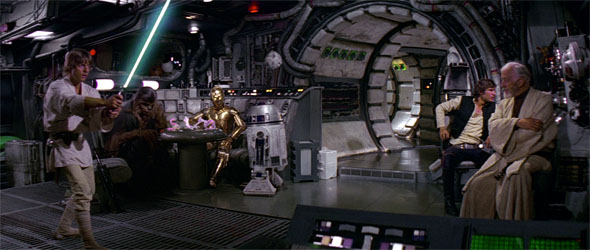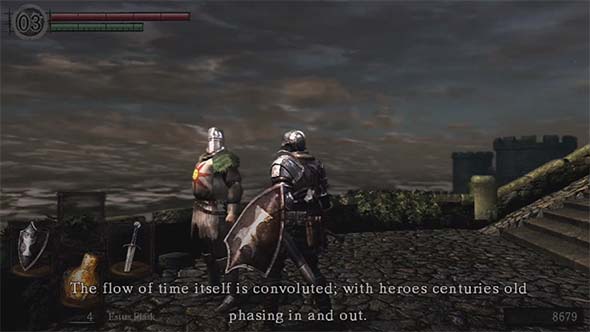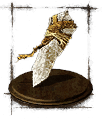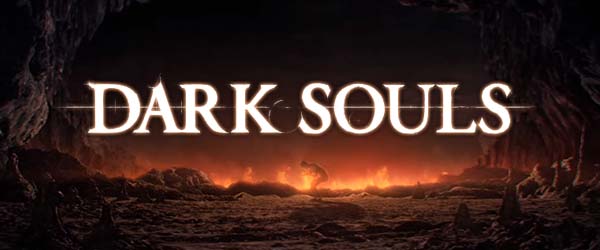In my reviews of The Force Awakens and Rogue One, I complained about how the speed of communications and hyperspace travel seems to have shrunk the Star Wars universe. I asserted that the writers seem to have no appreciation for the size and scale of this universe, or for galactic conflict. That observation severely hurt my enjoyment of both films. Star Wars has always flown lose with its science, but even though the original trilogy got a lot of details wrong (ahem, "parsec"!), there at least seemed to be an effort to respect some scientific believability. Even the prequels stayed fairly respectful to the size and scale of the universe and conflict. The new movies, by comparison, seem completely (and deliberately) scientifically illiterate.
Keep in mind that the following analysis is coming from someone with only minimal knowledge of the extended universe. I'm more of a Trekker than a Star Wars fan (a "Warser"?). I have tech manuals of the Enterprise and the star charts of the Federation, but no Star Destroyer tech manuals or Imeprial star charts. So my opinions come from the films alone. Besides, all those novels, video games, and comic books have been de-canonized by Disney anyway. If anyone more knowledgeable of the Star Wars extended universe wants to chip in with corroborating or conflicting information, feel free to do so in the comments. Thanks to Disney's meddling, such knowledge may now be moot.
And oh, by the way, it drives me nuts when Star Trek movies make these sorts of mistakes as well. I'm looking at you, Star Trek V and first episode of Enterprise!
Hyperspace originally analogous to contemporary air travel
Let's start by looking at a frame of reference: the trip in the Millenium Falcon in the first Star Wars movie. While the Millennium Falcon is in transit from Tatooine to Alderan, Luke has time to receive some rudimentary Jedi training from Obi Wan, Han calmly relaxes and socializes in the lounge, and Chewbacca has time for at least one game of space-chess against the droids. This hyperspace trip is presented as being analogous to cross-continental (or intercontinental) plane flight: at least enough time for passengers to unfasten their safety belts and wander around the cabin.

A hyperspace trip in the Millennium Falcon offers at least enough time for everyone to lounge about.
But an estimate of hours is on the low end of the spectrum of possibilities. As far as I can tell, there's nothing in the movie that negates the possibility of this trip to Alderaan taking days. That would certainly be plenty of time for Obi Wan to teach Luke enough of the basics of Force-sensitivity to enable his "lucky shot" in the climactic Death Star trench run. It would also give the characters enough time to socialize, converse and develop some sense of camaraderie with one another. It's also enough time for Leia to undergo at least a couple rounds of interrogation aboard the Death Star... [More]
26fb310b-edb8-4d45-99d9-16fdfa22b05a|2|5.0
Tags:Star Wars, Return of the Jedi, Star Wars: The Force Awakens, Rogue One: A Star Wars Story, hyperspace, faster than light, space, travel, distance, Tatooine, Alderaan, Endor, Battle of Endor, Scarif, Battle of Scarif, Millennium Falcon, airplane, World War II, Pearl Harbor, aircraft carrier

Perhaps I just have a bias against parallel dimensions (as evidenced from my interpretation of Silent Hill's otherworld), but I want to take some time to clear up what might be a mis-conception in the conventional wisdom interpretation behind Dark Souls' multiplayer summoning mechanics. Dark Souls co-op is not necessarily based on parallel dimensions, as many players seem to assume. It might, in fact, be intended to be an abstraction of some kind of time travel. I've noticed that many players online already seem to refer to the multiplayer mechanic of these games in terms of time travel, but I've yet to see any wikis, lore videos, or blogs that seem to explain multiplayer as a time travel mechanic.
I want to preface this analysis by stating that I'm not asserting that the following explanation is the absolute, 100% correct interpretation of the mechanic. Individual players may disagree based on their own reading of the game, and I'm personally somewhat conflicted on the topic myself. I merely want to propose this as a possible alternative to the defacto "parallel worlds" interpretation. I'm going to point out in-game evidence that supports the idea that Dark Souls' multiplayer is based on time travel, but there is also in-game evidence and mechanical evidence that flat-out contradicts that interpretation. I will address those contradictions as well. So that being said, please keep an open mind, and enjoy the read!
The summoning mechanic
There are two games in the series that are not part of the Dark Souls franchise, and which have different in-game explanations and rules for the same multiplayer features (more or less). Those games are, of course, Demon's Souls and Bloodborne. Both have asynchronous multiplayer and summoning mechanics that work similarly to Dark Souls.
Demon's Souls summoning operates under the idea of summoning the spirit of a fellow adventurer who's soul is trapped in the Nexus. This is why you must be in soul form in order to be summoned. Bloodborne's beckoning operates [similarly] under the principle of manifesting hunters out of dreams (which seems to operate under a similar cyclical paradigm to Dark Souls, but I'm not 100% sure). In Dark Souls, you aren't necessarily summoning ghosts (as you do in Demon's Souls), since the undead in Dark Souls are more akin to zombies than ghosts. Also, characters in Dark Souls can leave summon signs whether they are hollowed (dead) or in human form (revived), which is a significant alteration from Demon's Souls. A lore reason for summoning is provided in Dark Souls:

Solaire explains to us how summoning works:
"We are amidst strange beings, in a strange land.
The flow of time itself is convoluted; with heroes centuries old phasing in and out.
The very fabric wavers, and relations shift and obscure.
There's no telling how much longer your world and mine will remain in contact.
But, use this, to summon one another as spirits, cross the gaps between worlds, and engage in jolly co-operation!"
Both Solaire's dialogue, and the White Sign Soapstone (along with other online play items) make references to other "worlds", which leads to many jumping to the conclusion that each player's game is a sort of parallel universe within the Dark Souls lore. However, this may not necessarily be correct. Both Solaire's dialogue and the soapstone also provide explanations for these worlds: "time is convoluted | distorted". This seems to be the explanation for what is meant by "worlds", and it seems that Solaire and the in-game descriptions may be using "time" and "world" interchangeably (could it be a translation / localization issue?). The phrasing in the white soapstone's description joins "the flow of time is distorted", and "the White Soapstone allows undead to assist one another", into a single, compound sentence, which definitely implies that the two phrases (and ideas) are linked.

"Online play item. Leave summon sign.
Be summoned to another world as a phantom through your sign, and defeat the area boss to acquire humanity.
In Lordran, the flow of time is distorted, and the White Sign Soapstone allows Undead to assist one another"
The dialogue of Saulden (the Crestfallen Warrior of Dark Souls II) is even more explicit... [More]
b4b5ccdc-fe67-4add-901b-a41077204778|4|5.0
Tags:Dark Souls, Dark Souls II, Dark Souls III, lore, summon, phantom, multiplayer, From Software, time travel, paradox, grandfather paradox, predestination paradox, parallel dimension, soapstone, Solaire, Crestfallen
Warrior, Crestfallen Saulden, Lautrec, Ringfinger Leonard, Anri of Astora, Sirris of the Sunless Realms, Black Iron Tarkus, Iron Golem, Anor Londo, invasion, Demon's Souls, Bloodborne

I'm going to do something that I don't normally do, which is to muse a little bit on the theories of other fans. Normally, when I write these lore posts, I write about what I believe - my own personal interpretation. In this case, however, I stumbled upon a video and a blog written by two different users that posit two entirely different (and probably contradictory) fan theories regarding the Souls games. Both theories piqued my interest and lead me down a rabbit hole of my own thought and speculation. So I'm going to summarize the theories that these two have pitched, and also throw in my own thoughts.
But first, let's review the conventional Dark Souls wisdom of the cycles of Fire and Dark. According to conventional wisdom, the dragons and archtrees of the Age of Ancients existed at the genesis of the world. The fire then appeared and ushered in the Age of Fire, but the fire faded, and the Age of Dark began. Lord Gwyn sacrificed himself to rekindle the flame and renew the Age of Fire, but it eventually faded again, leading to an Age of Dark. And the world continued in this endless cycle of the fire
fading and then being rekindled.
An overarching cycle of world-creation?
First, I'll start with a video by The Ashen Hollow, which is about the Cycle of Ages, and which speculates that the Soul of the Lords and Age of Dark ending establishes that the Age of Dark eventually gives way to yet another Age of Ancients. This creates a cycle of cycles, in which not only does the world of Dark Souls repeat Ages of Fire and Ages of Dark, but that once that cycle has run its course, it repeats yet another cycle of world-creation. Dark Souls III, therefore, takes place at the end of an Age of Fire, but it also takes place at the tail end of a cycle of world-creation and destruction. So Dark Souls III is a sequel to the first Dark Souls, and also the first Dark Souls is - in a sense - a sequel to Dark Souls III.

"Soul of the Lords.
One of the twisted souls, steeped in strength.
Use to acquire numerous souls, or transpose to extract it's true strength.
Since Lord Gwyn, the first Lord of Cinder, many exalted lords have linked the First Flame, and it is their very souls that have manifested themselves as defender of the flame."
When the fire inevitably fades, there will be an Age of Dark. This we know. The entire game series, so far, has been about perpetuating this Age of Fire for as long as possible in order to avoid the Age of Dark. Though the first and third game gives us the explicit option to initiate an Age of Dark, it's unclear if that ever actually happens in the canon of the series. And even if it does, the ending of Dark Souls II establishes that either course of action will just result in that chosen age cycling back to the other. We've never actually seen a proper Age of Dark, so we know little of what it would be like. Perhaps the Age of Dark is not permanent. According to the Fire Keeper (if given the Eyes of a Fire Keeper), the Age of Dark is not completely without fire, for there will be little embers dancing in the distance, left to us by past lords. [More]
f4e772f4-cf45-45f5-a271-3c8dd01253f5|3|5.0
Tags:Dark Souls, lore, Age of Ancients, Age of Lords, Age of Fire, Age of Dark, Age of the Deep Sea, cycle, prophecy, Dark Soul, humanity, Furtive Pygmy, Gwyn, first flame, Kiln of the First Flame, archtree, Archdragon Peak, dragon, puss of man, light, dark, Soul of Lords, Ebrietas, Seath the Scaleless, Patches, Moonlight Greatsword, Marvelous Chester, Oceiros, Demon's Souls, Bloodborne, Old One, fog, soul, blood, The Ashen Hollow, James Wynne, H.P. Lovecraft, Armored Core, King's Field

A couple years ago, I posted about a burning question in Dark Souls' lore: who is the "forgotten" god of war (first-born sun of Gwyn) who was expunged from the annals of Anor Londo? At the time, the leading theory was that Solaire was intended to be the firstborn god of war, and I tentatively went along with that interpretation. There were a few holes in the theory, a lot of it was circumstantial, and there were even a couple of alternative possibilities. I also wholly admitted that it was very likely that the god of war character simply wasn't present in the original game, except through the lore references in the environment and item descriptions. Dark Souls II did little to answer this question, other than to provide a possible name for the god of war: Faraam. Well, it turns out that Dark Souls III finally answers this question, and all of us who thought it might be Solaire were totally wrong - and may even look foolish in retrospect.
As is so often the case with Souls games, you'll have to work hard to find all the good lore. In this case, you'll need to find and conquer the optional Archdragon Peak area of the game, which, itself, requires that you find the Untended Graves optional area as well.
These statues of the Nameless King resemble the statue and pose of Gwyn in the first game.
Once you make it to Archdragon Peak, you'll be treated with a large, sunny area populated with serpent men that should look familiar to veteran Dark Souls players. I'm still unclear regarding the lore behind these enemies. The original man serpents from Dark Souls were hybrid creations of Seath's experiments. Perhaps the man serpents in Archdragon Peak are the progeny of the original serpent men from Sen's Fortress. More importantly, however, is that Archdragon Peak is also home to the Ancient Wyvern and the Nameless King.
During your encounter with the Ancient Wyvern, you'll get your first clue as to the lore that will be uncovered in this area. You'll find regal statues of a being holding a massive swordspear weapon. The style and pose of this statue may remind you of the statues of Gwyn that you saw in Anor Londo in both Dark Souls and Dark Souls III. The way that the character is standing, and the way that he's holding his weapon looks like he could fit in perfectly standing next to Gwyn in the Anor Londo cathedral...
[More]
7e4d29a3-895e-4a8b-8da9-36053957ccf0|3|4.7
Tags:Dark Souls, Dark Souls II, Dark Souls III, lore, From Software, Hidetaka Miyazaki, God of War, Gwyn, Faraam, Nameless King, Archdragon Peak, Untended Graves, dragon, Dragonslayer Ornstein, Solaire, son, sun, Warrior of Sunlight, annals, Anor Londo, Velka, DLC, Ashes of Ariandel, Ariamis
My past two blog posts have been focused on open world gaming. These posts have been continuations of an earlier post about the narrative "limbo" that many open world games create via their quest structures. In the first post in this second series, I pointed out what I perceive to be a problem with open world games that insist on turning their sandbox worlds into little more than convoluted mission-select screens and collectible checklists. In the following post, I described some games that I think managed to make successful open worlds by including features or mechanics that made traveling through the space (or knowledge of the space) into a meaningful mechanic. This time, I want to go back to some of the games that I singled-out in the first post in this series, and brainstorm some ways that they could have made better use of the large spaces that their maps offered so that traveling around the world wouldn't become so boring later in the game.
But before I do that, I want to re-emphasize that I don't hate these games. They're just not very good at using their space, and that's what I'm criticizing. Well, the newer Assassin's Creed games have been pretty terrible. Anyway, I pick on games like Skyrim and The Witcher III a lot, but I like them just fine - I bought the DLC for both. I pick on them, not because I hate them, but because I do like them and I want them to get better (or for their sequels to get better). Rather, my objective here is to find ways for these games to make better use of the large, open spaces that they provide the player, so that exploring the map feels more mechanically relevant, more interesting, or more rewarding; and to feel less like a time-sink.
Games like Skyrim and The Witcher III have massive worlds, but do a poor job of utilizing the space.
Bethesda's Skyrim and Fallout titles, as well as CD Projeckt Red's Witcher III and Rockstar's Grand Theft Auto V, already have open worlds that transcend being simple, convoluted mission-select screens like games like Assassin's Creed and Metal Gear Solid V. They populate their worlds with little narrative world-building details that make their worlds feel alive and lived-in (even though they may feel stagnant). So what could a game like Skyrim or The Witcher III have done to improve its open world? [More]
1a284324-86e6-4bf6-90a4-dca665c348d9|1|5.0
Tags:open world, sandbox, game design, road trip, map, traversal, travel, cartography, geography, narrative, ludonarrative, ludonarrative dissonance, limbo, paradox, Kafkaesque, quest, Ubisoft, Bethesda, Rockstar Games, Beenox, Insomniac Games, Naughty Dog, Assassin's Creed, The Elder Scrolls, Skyrim, The Witcher 3, Grand Theft Auto, Grand Theft Auto V, The Last of Us, Spider-Man, web-swinging, comic book
|

| 12 | | | | | | | 60 | | 11 | | | | | | | 55 | | 10 | | | | | | | 50 | | 09 | | | | | | | 45 | | 08 | | | | | | | 40 | | 07 | | | | | | | 35 | | 06 | | | | | | | 30 | | 05 | | | | | | | 25 | | 04 | | | | | | | 20 | | 03 | | | | | | | 15 | | 02 | | | | | | | 10 | | 01 | | | | | | | 05 |
|